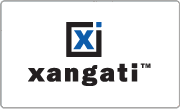This article needs additional citations for verification .(May 2009) (Learn how and when to remove this template message) |
Dynamic provisioning environment (DPE) is a simplified way to explain a complex networked server computing environment where server computing instances or virtual machines (VMs) are provisioned (deployed or instantiated) from a centralized administrative console or client application by the server administrator, network administrator, or any other enabled user. The server administrator or network administrator has the ability to parse out control of the provisioning environment to users or accounts in the network environment (end users, organizational units, network accounts, other administrators). The provisioned servers or VMs can be inside the firewall, outside the firewall, or hosted depending on how the supporting pool of networked server computing resources is defined. From the perspective of the end user/client the requested server is deployed automatically.
In computing, a virtual machine (VM) is an emulation of a computer system. Virtual machines are based on computer architectures and provide functionality of a physical computer. Their implementations may involve specialized hardware, software, or a combination.

A client is a piece of computer hardware or software that accesses a service made available by a server. The server is often on another computer system, in which case the client accesses the service by way of a network. The term applies to the role that programs or devices play in the client–server model.

A system administrator, or sysadmin, is a person who is responsible for the upkeep, configuration, and reliable operation of computer systems; especially multi-user computers, such as servers. The system administrator seeks to ensure that the uptime, performance, resources, and security of the computers they manage meet the needs of the users, without exceeding a set budget when doing so.
From a simple to use client application / desktop application any administrator or designated end user is able to easily instantiate a server instance or virtual machine(VM) instance. The server instance is provisioned for the eligible administrator or end user without anyone having to physically touch the supporting server infrastructure. While defining the server or VM to instantiate the client application gives the end user or administrator the ability to define the operating system and applications that will run within the server instance to be provisioned automatically.

An operating system (OS) is system software that manages computer hardware and software resources and provides common services for computer programs.
Desktop dynamic provisioning environment (desktop DPE) or client dynamic provisioning environment (client DPE) is the scenario where a dynamic provisioning environment (DPE) is being used to provision client computing instances or desktop computing instances.
Origin of DPE (dynamic provisioning environment): First documented in 2007; Cambridge, Massachusetts US. "DPE" is the acronym for dynamic provisioning environment
DPE can be a vendor independent environment or an environment defined by a specific vendor. A dynamic provisioning environment (DPE) is flexible and can be defined as supporting a set of heterogeneous applications, defined as supporting a single application, or could be created in an appliance model to deploy a discrete application customized for a specific usage scenario.
From an operating system perspective a DPE server infrastructure can exist on one server operating system (homogeneous server infrastructure) or exist as on a defined set of servers with different multiple operating systems (heterogeneous server infrastructure). The server instances or VMs provisioned by the DPE could be one specific server operating system or multiple server operating systems. Same idea for client systems instantiated by the DPE. The client instantiated by the DPE could be one or multiple client/desktop operating systems. [1]
Components of a DPE will vary based on the density of the computing environment. Would commonly include, servers or virtual server instances, directory server, network connectivity( TCP/IP), management layer, virtual machine management tools, server provisioning tools, client application, client interface.
Microsoft Virtual Server was a virtualization solution that facilitated the creation of virtual machines on the Windows XP, Windows Vista and Windows Server 2003 operating systems. Originally developed by Connectix, it was acquired by Microsoft prior to release. Virtual PC is Microsoft's related desktop virtualization software package.
In computing, directory service or name service maps the names of network resources to their respective network addresses. It is a shared information infrastructure for locating, managing, administering and organizing everyday items and network resources, which can include volumes, folders, files, printers, users, groups, devices, telephone numbers and other objects. A directory service is a critical component of a network operating system. A directory server or name server is a server which provides such a service. Each resource on the network is considered an object by the directory server. Information about a particular resource is stored as a collection of attributes associated with that resource or object.
The Internet protocol suite is the conceptual model and set of communications protocols used in the Internet and similar computer networks. It is commonly known as TCP/IP because the foundational protocols in the suite are the Transmission Control Protocol (TCP) and the Internet Protocol (IP). It is occasionally known as the Department of Defense (DoD) model because the development of the networking method was funded by the United States Department of Defense through DARPA.





